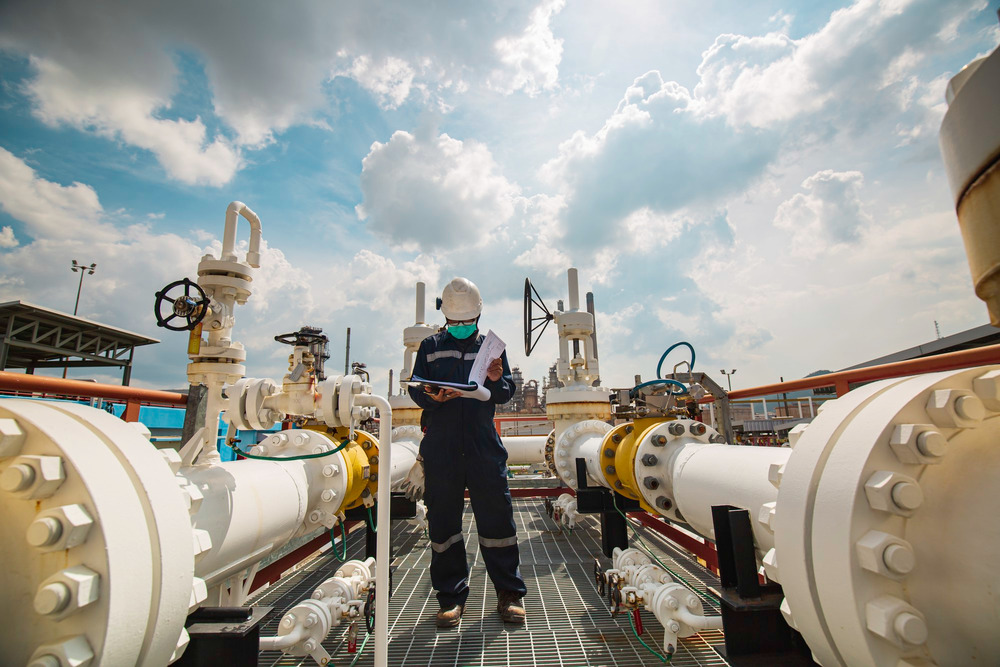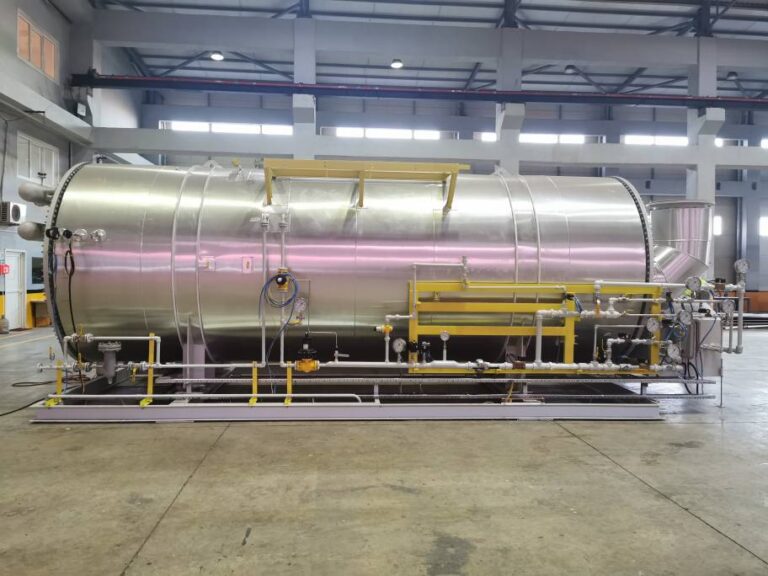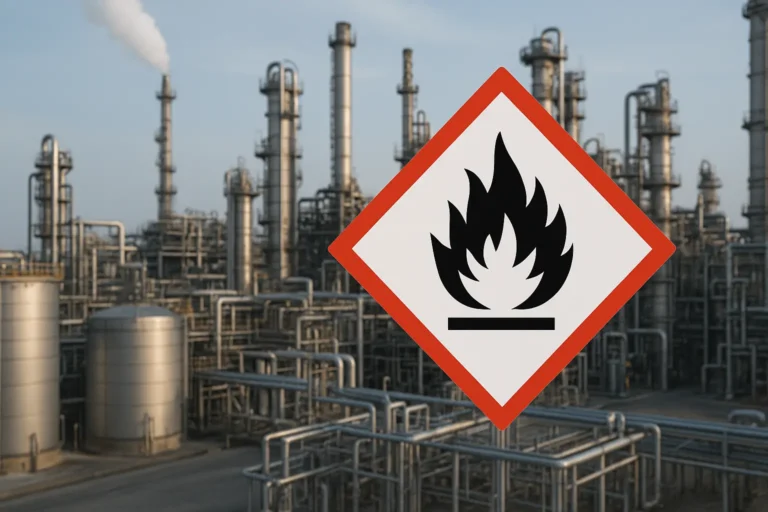What Are the Water Bath Heater Systems And What Are the Areas of Use?
Water bath heaters are crucial in various industrial applications, offering a safe and efficient method for heating different types of...
Devamını Oku

In today’s industrial automation landscape, system failures and production downtimes can lead to significant financial losses and operational setbacks. To mitigate such risks, redundant PLC systems have become an essential component in modern automation infrastructure. These systems provide a backup mechanism, ensuring continuous and reliable operation even when a primary controller fails. The need for redundancy arises from the ever-increasing demand for safety, efficiency, and uninterrupted workflow in critical industries.
What is redundant PLC technology, and why is it gaining so much importance? In essence, a redundant system is composed of at least two PLCs operating in synchronization. While one serves as the main controller, the other stands by to take over immediately in case of failure. This setup eliminates single points of failure, ensuring production lines and safety systems run without interruption. In sectors such as energy, pharmaceuticals, petrochemicals, and automotive manufacturing, redundant systems play a vital role in maintaining quality, safety, and performance at the highest standards.
A redundant PLC (Programmable Logic Controller) is an automation control system that includes two or more identical CPU units working in parallel to ensure continuous operation. While one CPU functions as the primary controller, the other(s) act as backup units, ready to instantly take over in the event of a malfunction. This ensures that operations continue seamlessly without any interruption, providing enhanced reliability for critical industrial processes. Redundant PLCs are most valuable in applications where even a momentary shutdown could cause data loss, production stoppage, or safety risks.
The main purpose of using a redundant PLC is to maintain system integrity and process continuity in the face of unexpected hardware or software failures. These systems are often employed in high-stakes environments like energy production, chemical plants, and pharmaceutical manufacturing, where uptime and safety are non-negotiable. Through constant communication and synchronization between the main and backup CPUs, a redundant setup minimizes downtime, maximizes system availability, and provides a robust foundation for scalable and safe automation.
Implementing a redundant PLC system brings significant advantages to industrial automation by enhancing system reliability, increasing safety, and reducing operational risks. One of the key benefits is the ability to maintain uninterrupted operations even during unexpected failures. When the primary controller encounters an issue, the backup controller immediately takes over control without disrupting the ongoing process. This eliminates downtime and keeps production running smoothly.
Another major advantage of a redundant PLC is the improvement in system availability and operational efficiency. Redundant configurations not only help prevent total system failures but also enable scheduled maintenance and updates without halting operations. This ensures better lifecycle management for automation equipment and reduces the need for emergency repairs. Moreover, such systems boost safety by maintaining the integrity of safety-critical applications, making them indispensable in industries that require continuous process monitoring and real-time data processing.
One of the most crucial benefits of a redundant PLC system is its exceptional resistance to failure. In traditional single-controller setups, a hardware malfunction or software error can bring the entire production line to a halt. However, with a redundant configuration, a standby controller instantly takes over if the primary unit fails. This seamless handover eliminates process interruptions and safeguards critical operations.
By reducing the risk of total system collapse, redundant PLC systems ensure that factories and plants maintain productivity even under adverse conditions. This is particularly vital in environments where even a few seconds of downtime can lead to product defects, financial loss, or safety concerns. High resistance to failure means higher reliability, which is why redundant systems are increasingly becoming a standard in modern industrial automation.
In industries where continuous production is essential, redundant PLC systems play a critical role in guaranteeing seamless operation. The main advantage lies in their ability to instantly switch control to a backup unit without any disruption when the primary PLC fails. This real-time failover capability ensures that machinery, sensors, and safety mechanisms remain fully functional, even in the face of unexpected breakdowns.
By maintaining uninterrupted operations, redundant PLC systems prevent costly downtimes and protect overall production flow. This is especially important in sectors like energy generation, pharmaceuticals, and food processing, where system stoppages can lead to spoilage, safety risks, or environmental hazards. Continuity is the foundation of efficiency and quality control, making redundant systems a strategic investment for forward-thinking businesses.
A major strength of redundant PLC systems lies in their ability to significantly reduce operational risks and improve workplace safety. In automated environments, even a minor control failure can lead to dangerous situations such as equipment damage, hazardous material leaks, or operator injury. Redundancy ensures that if one controller fails, another takes over instantly, maintaining safe conditions without human intervention.
By offering built-in backup control and minimizing manual responses, redundant PLC configurations enhance the integrity of safety systems. This is especially valuable in industries like petrochemicals and pharmaceuticals, where processes involve volatile or sensitive materials. Improved safety not only protects people and the environment but also ensures compliance with regulatory standards, which is critical for sustainable and legally secure operations.
Redundant PLC systems are essential in industries where process reliability, safety, and continuity are non-negotiable. These industries often involve high-stakes operations where even a momentary failure can lead to production losses, equipment damage, or safety incidents. In such cases, redundant systems ensure that control remains uninterrupted by instantly switching to a backup unit in the event of a failure. This makes them a critical investment for businesses aiming to optimize both uptime and operational safety.
Typical applications of redundant PLC setups can be found across a wide range of sectors, including power generation, chemical processing, automotive manufacturing, and pharmaceutical production. In each of these environments, the automation systems must function flawlessly under demanding conditions. Redundancy not only provides a safety net for mission-critical operations but also allows for preventive maintenance and system upgrades without shutting down the entire process, thus improving long-term efficiency and cost-effectiveness.
In energy production facilities, uninterrupted operation is essential to maintain grid stability and meet consumer demand. A redundant PLC system ensures continuous monitoring and control of critical equipment such as turbines, generators, and transformers. If the main controller fails due to a fault or overload, the backup unit seamlessly takes over, avoiding shutdowns or blackouts.
Since power generation often involves high temperatures, pressure, and complex synchronization, the reliability of automation is crucial. By integrating redundant PLC systems, energy facilities achieve higher fault tolerance, reduce maintenance risks, and ensure real-time data logging and protection. These systems also support predictive maintenance and faster response times, making them a strategic asset for long-term operational success.
Chemical and petrochemical plants involve highly sensitive processes where any interruption can lead to hazardous situations or major production losses. A redundant PLC setup plays a vital role in these environments by ensuring that critical safety and process control systems remain active even if a primary controller fails. This reduces the risk of chemical leaks, explosions, or process disruptions.
Due to the volatile nature of materials used in these industries, automation systems must maintain constant reliability. Redundant PLC systems help meet strict regulatory and environmental safety standards, while also enhancing process efficiency and traceability. By enabling continuous operation and fast failover responses, redundant control structures form the backbone of safe and productive chemical processing environments.
Modern automotive production lines rely heavily on automation for precision, speed, and quality assurance. In these high-speed environments, any control system failure can cause immediate line stoppage, leading to costly delays and product defects. A redundant PLC setup ensures seamless operation by automatically switching to a backup controller if the main one encounters an issue.
This uninterrupted control flow helps maintain consistency across robotic arms, conveyor systems, and quality inspection stations. By using redundant PLC systems, automotive manufacturers minimize production downtime, improve safety across complex machinery, and enhance their ability to meet just-in-time delivery goals. Redundancy also enables smoother system maintenance without halting the production line.
Hygiene, quality standards and traceability are vital in food and pharmaceutical production facilities. In these industries, any production disruption can lead not only to financial losses but also to serious risks to product safety. For this reason, redundant PLC systems are preferred in the food and pharmaceutical industries to ensure both production continuity and consistency of processes. Thanks to redundant structures, even the slightest disruptions in production can be quickly compensated.
Redundant PLC systems play a critical role in the automation of sterile production lines, filling machines, packaging systems and temperature-humidity controlled environments. These systems prevent the production line from stopping by activating in case of sudden malfunctions and ensure the uninterrupted operation of quality control processes. With Adatech’s solution-oriented approach, high safety and production standards are achieved in such sensitive areas.
Although redundant PLC systems are preferred in facilities that require high reliability, some critical points must be taken into consideration during the installation phase in order for these systems to work properly and efficiently. First of all, the configuration of the redundant system must be planned correctly, and the main and backup controllers must be configured to work in full harmony with each other. Appropriate network infrastructure is of great importance for the smooth operation of synchronization.
In addition, physical isolation, diversification of energy supply sources and independent cabling of redundant components are required in areas where redundant PLC systems will be installed. System tests, scenario simulations and transition processes must be tested in detail. The installations realized with Adatech’s expert engineer staff offer maximum security and performance to businesses, as they are equipped with both technical competence and sectoral know-how. Proper planning and professional implementation are among the most important factors determining the success of redundant systems.

Water bath heaters are crucial in various industrial applications, offering a safe and efficient method for heating different types of...
Devamını Oku
In the era of rapid technological advancement, Industry 4.0 represents the next stage of industrial transformation, integrating smart technologies, automation,...
Devamını Oku
In industrial safety, minimizing risks is not only about equipment quality but also about understanding the physical and chemical properties...
Devamını OkuPROTECTION OF PERSONAL DATA
WEBSITE COOKIE POLICY
Your personal data; It is one of the leading principles of our Organization to protect the privacy of visitors to the website (www.adatech.com.tr) operated by ADATECH as the data controller. This Cookie Usage Policy (“Policy”) explains to all our website visitors and users which types of cookies are used and under what conditions.
Cookies are small text files stored on your device or network server by websites you visit on your computer or mobile device.
They are generally used to provide you with a personalized experience during your use of the website you visit, to improve the services offered and to improve your experience, and may contribute to ease of use while browsing a website. If you do not prefer the use of Cookies, you can delete or block Cookies in your browser settings. However, we would like to remind you that this may affect your use of our website. Unless you change your cookie settings in your browser, we will assume that you accept the use of cookies on this website.
1. WHAT KIND OF DATA IS PROCESSED IN COOKIES?
Cookies on websites, depending on their type, collect data about your browsing and usage preferences on the device you visit the site. This data includes information about the pages you access, the services and products you review, your preferred language option and other preferences.
2. WHAT is a solution and what are its intended uses?
Cookies are small text files that are stored on your device or network server through browsers by websites you visit. These small text files, which contain your preferred language and other settings on the site, help us remember your preferences the next time you visit the site and make improvements to our services to improve your experience on the site. Thus, you can have a better and personalized usage experience on your next visit.
The main purposes of using cookies on our Website are listed below:
3.TYPES OF COOKIES USED ON OUR WEBSITE
3.1. Oturum Çerezleri
Session cookies ensure that the website functions properly during your visit. They are used for purposes such as ensuring the security and continuity of our sites and you during your visit. Session cookies are temporary cookies, they are deleted when you close your browser and come to our site again, they are not permanent.
3.2. Persistent Cookies
These types of cookies are used to remember your preferences and are stored on your device via browsers. Persistent cookies remain stored even after you close your browser or restart your computer from which you visited our site. These cookies are kept in subfolders of your browser until they are deleted through your browser’s settings.
Some types of persistent cookies may be used to provide you with special suggestions, taking into account issues such as your purpose of using the Website.
Thanks to persistent cookies, if you visit our Website again with the same device, it is checked whether there is a cookie created by our Website on your device and if there is, it is understood that you have visited the site before and the content to be transmitted to you is determined accordingly and thus a better service is provided to you.
3.3. Mandatory/Technical Cookies
These cookies are essential for the website you visit to function properly. The purpose of such cookies is to provide necessary services by enabling the website to function. For example, it allows you to access secure parts of the website, to use its features, to navigate on it.
3.4. Analytical Cookies
They collect information about the way the website is used, the frequency and number of visits, and show how visitors navigate to the site. The purpose of using such cookies is to increase performance by improving the way the site functions and to determine the general trend direction. They do not contain data that could enable the identification of visitors. For example, they show the number of error messages displayed or the most visited pages.
3.5. Functional/Functional Cookies
It saves the choices made by the visitor within the site and remembers them on the next visit. The purpose of such cookies is to provide ease of use to visitors. For example, it prevents the site user from re-entering the user password on each page they visit.
3.6. Targeting/Advertising Cookies
They enable the measurement of the effectiveness of advertisements served to visitors and the calculation of the number of times the advertisements are viewed. The purpose of such cookies is to serve ads customized to the interests of visitors.
Likewise, they enable the detection of visitors’ interests specific to their browsing and the presentation of appropriate content. For example, it prevents the advertisement shown to the visitor from being shown again in a short time.
4. HOW TO MANAGE COOKIE PREFERENCES?
To change your preferences regarding the use of cookies or to block or delete cookies, simply change your browser settings.
Many browsers give you the option to accept or reject cookies, accept only certain types of cookies, or be alerted by the browser when a website requests to store cookies on your device so that you can control cookies.
It is also possible to delete cookies previously saved in your browser.
If you disable or refuse cookies, you may need to set some preferences manually, some features and services on the website may not function properly as we will not be able to recognize and associate your account. You can change the settings of your browser by clicking on the relevant link from the table below.
5. ENFORCEMENT OF WEBSITE PRIVACY POLICY
Website Privacy Policy …./…./…./…. . is dated. In case all or certain articles of the Policy are renewed, the effective date of the Policy will be updated. The Privacy Policy is published on the website of the Authority (www.adatech.com.tr) and made available to the relevant persons upon the request of the personal data owners.
ADATECH
Address: Esenyalı Neighborhood Yanyol Street Varyap Plaza No:61-148 Pendik / Istanbul
Telephone: +90 (216 ) 514 80 69
E-mail: [email protected]
Web Address: www.adatech.com.tr